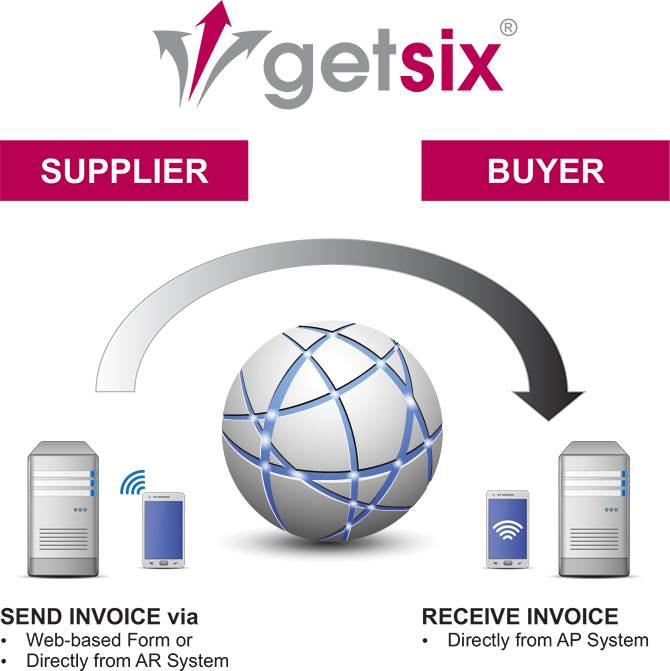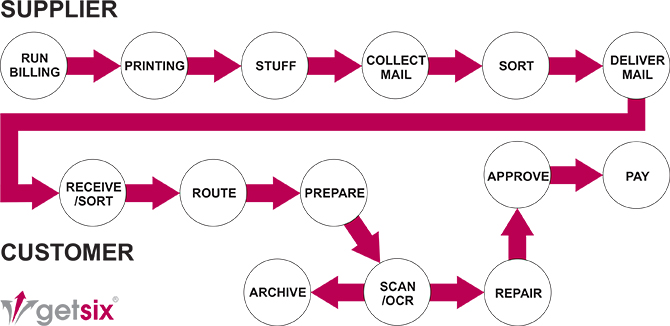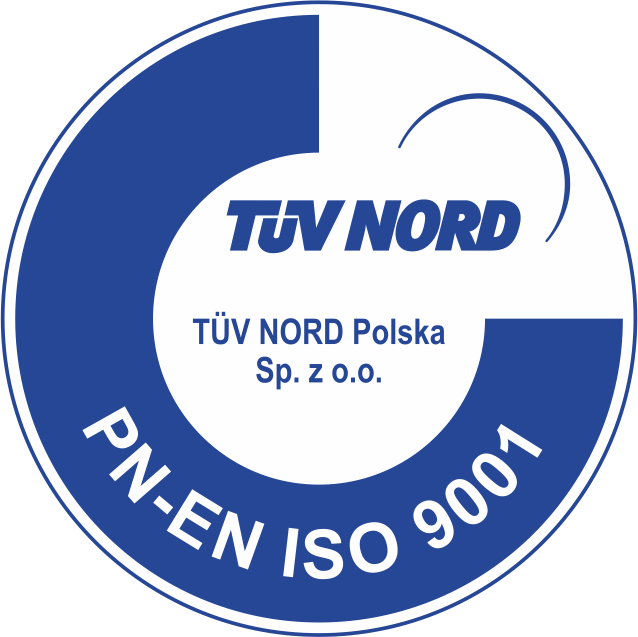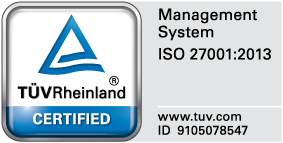What is e-Invoicing?
Electronic invoicing (e-Invoicing) is the exchange of the invoice document between a supplier and a buyer, in an integrated electronic format. Traditionally, invoicing, like any heavily paper-based process, is manually intensive and is prone to human error, resulting in increased costs and processing lifecycles for companies.
e-Invoicing is a common B2B practise and has been part of Electronic Data Interchange (EDI) transactions for many years. The issue of compliance seems to have separated e-Invoicing from B2B. Perhaps surprisingly,many decision makers are unaware that their company is already sending/receiving EDI electronic invoices.

The true definition of an electronic invoice, is that it should contain data from the supplier in a format that can be entered (integrated) into the buyer’s Account Payable (AP) system, without requiring any data input from the buyer’s AP administrator.
As this allows for a number of formats to be employed, it is useful to apply the following guidelines:
‘A TRUE e-Invoice’
- Structured invoice data issued in Electronic Data Interchange (EDI) or XML formats;
- Structured invoice data issued using standard Internet-based web forms.
‘NOT a true e-Invoice’
- Unstructured invoice data issued in PDF or Word formats;
- Paper invoices sent via fax machines;
- Scanned paper invoices.
Although significant cost and time savings can be achieved by removing paper and manual processing from your invoicing, the real benefits of e-Invoicing come with the level of integration between you and your trading partners, and between your invoicing software and other business systems.
Need any help?
One of our e-Invoicing experts would be happy to answer any questions you have.
Please have a look to our related solutions/services.
Our e-Invoicing solutions:
We are offering solutions regarding ‘a TRUE e-Invoice’ and ‘NOT a TRUE e-Invoice’ to maximise productivity for our customers’ needs and requirements.
- e-Invoicing overview
- Sending an e-Invoice
- Receiving an e-Invoice
The Types of e-Invoicing
There is often confusion between different types of invoice automation under the term ‘e-Invoicing’. Invoice automation via scanning and Optical Character Recognition (OCR), is the digitisation of paper-based invoices upon receipt by the buyer. Issuing PDF invoices via email is another form of automation, but while it removes paper from the process, it does not provide full integration. Both of these methods are often referred to as e-Invoicing, but are not really considered to be ‘true’ e-Invoicing.
True e-Invoicing fully automates the invoice capture and receipt process, so the buyer does not need to perform any data entry – that’s because invoice information flows directly from the supplier to the buyer’s back-office system, requiring no manual intervention by the buyer. The buyer receives invoices from its suppliers using formats that have been agreed in advance. The invoices may include mechanisms – such as digital signatures and EDI – that ensure their authenticity and integrity. They will arrive at the buyer in a format that can be integrated into their ERP and then archived for the legally required period, without being altered in any way.
The diagram below illustrates e-Invoicing with compliance.

In essence, there are really 2 types of ‘true’ e-Invoicing that you need to understand. e-Invoicing with or without compliance.
e-Invoicing without compliance
The process for electronic invoicing without compliance is as follows:
- The buyer and supplier agree the format that the e-Invoice will take and the data to be included;
- The data will be correctly structured (X12, Edifact, XML) using technology such as EDI or simple web forms for web invoicing;
- The supplier creates and sends an electronic invoice either directly from their Accounts Receivable (AR) system or via a web-based form;
- The buyer receives the electronic invoice in a format ready to be processed by the Accounts Payable (AP) system.
In this instance, the e-Invoice conforms only to the data formats that are established by the trading partners. It does not accommodate the regulatory obligations of the countries, in which, the electronic invoice is issued or received. In some cases this is because some countries have little or no e-Invoicing regulations, and others because companies choose to capture the B2B efficiencies, while running a tax compliant paper process.
e-Invoicing with compliance
The process for electronic invoicing with compliance is very similar to the process above, except for:
- The format of the e-Invoice data is determined by the legislation and regulations of the territories in which both parties are trading;
- The e-Invoices adhere to government-specified guidelines for e-Invoice content validation, security, non-repudiation and archiving;
- The invoices are easily available for audit and VAT purposes;
- Paper is fully removed from the process.
It makes sense for an organisation to adopt this approach as it will facilitate their VAT obligations. However, there are no standard regulations governing e-Invoicing. Instead, there are widely varying, country-specific approaches – ranging from complete prohibition to almost no restrictions – that any company trading internationally will have to understand and accommodate.
A note on invoice automation via scanning and OCR
Although the scanning of paper-based invoices isn’t considered e-Invoicing, it is the natural first step for many organisations. Using OCR software, the data can be moved from a paper-based format to a digital format that can be entered in the AP system.

OCR is not an error-free solution and legibility issues with the original invoice will necessitate manual data entry to resolve any issues. In most cases, some manual data entry will be required. Once an OCR initiative is introduced, your organisation can benefit from some time and cost savings in the routing, approval and payment of invoices. However, this approach should only be seen as a short term measure.
A note on emailing PDF invoices
Issuing a PDF invoice by email, whether compliant or non-compliant, does remove paper from your process, but it creates new problems for your customers. The customer’s AP department still has to capture the data from the PDF, and this can only be achieved by separate OCR technologies (sometimes printing the PDF invoice) or by keying the data directly from the PDF image. While PDF invoices can be a good first step on the road to true e-Invoicing, they do not provide the end-to-end integration.
Need any help?
One of our e-Invoicing experts would be happy to answer any questions you have. Simply ask our e-Invoicing experts.
The Benefits of e-Invoicing
E-invoicing enables a company to automate their invoice processing. As a result, buyers, suppliers and other managers gain a number of operational and strategic benefits. In addition to cost savings, the ability to automate the invoicing process and integrate with other business systems provides business efficiency and revenue generating opportunities.
At a glance:
The key benefits for buyers, suppliers and managers include:
| For Buyers | For Suppliers | For Managers |
|---|---|---|
|
– Reduced costs – Increased accuracy – Increased AP productivity – Faster processing and payment cycles – Focus on higher value activities – Enhanced accounts reconciliation – Improved cash management – Reduced fraud, duplicates and late payment fees – Improved dispute handling – Improved supplier relationships – Optimised community management |
– Faster payments – Reduced costs – Fewer rejected invoices – Increased productivity – Enhanced accounts reconciliation – Improved customer relationships – Improved cash management – Alternative finance options |
– Improved visibility – Optimised working capital – Improved compliance – Improve supplier/customer relationships – Enhanced IT system optimisation – Meeting green initiatives |
Find out more regarding getsix® solutions:
| Receiving e-Invoices | Procure-to-Pay (P2P) | Sending e-Invoices | Order to Cash (O2C) |
|---|---|---|---|
| – Receiving e-Invoices | – Procure to pay | – Sending e-Invoices | – Order to cash |
If you have any questions regarding this topic or if you are in need for any additional information – please do not hesitate to contact us:
CUSTOMER RELATIONSHIPS DEPARTMENT

ELŻBIETA
NARON-GROCHALSKA
Head of Customer Relationships
Department / Senior Manager
getsix® Group
***













